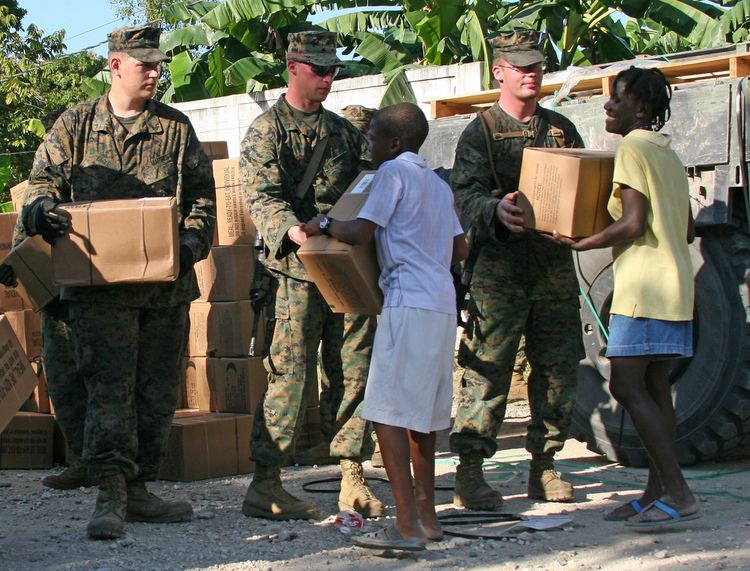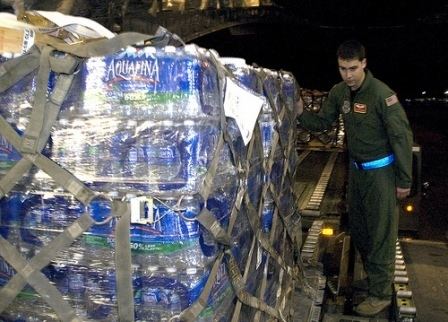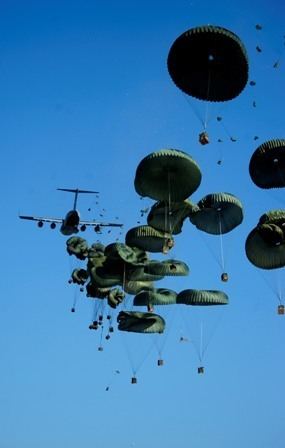Dates 13 Jan 2010 – 24 Mar 2010 | Location Haiti | |
 | ||
Toward the sounds of chaos operation unified response
Operation Unified Response was the United States military's response to the 2010 Haiti earthquake. It was conducted by Joint Task Force Haiti and commanded by United States Southern Command (USSOUTHCOM) Military Deputy Commander Lieutenant General Ken Keen, although the overall U.S. government response was headed by Rajiv Shah, administrator of the United States Agency for International Development (USAID).
Contents
- Toward the sounds of chaos operation unified response
- Mission timeline
- International reactions
- Legacy
- References

The response included personnel from all branches of the military. The U.S. Navy listed its resources in the area on 19 January as "17 ships, 48 helicopters and 12 fixed-wing aircraft" in addition to 10,000 sailors and Marines. By 26 January, the U.S. military had 17,000 personnel in and around Haiti. Between the beginning of refief efforts and 18 February the US Air Force had delivered nearly 6,000 support members and 19 million pounds of cargo while evacuating 15,000 American citizens and conducted aeromedical evacuations for 223 critical Haitian patients.

Elements of the mission included flying in relief supplies, flying out evacuees, including medical evacuees, loading helicopters with supplies at the PAP airport, and then dropping supplies at various points around Port-au-Prince, airdropping supplies from fixed-wing aircraft, establishing a field hospital near the Port international de Port-au-Prince, repairing a pier at the port, providing imagery from satellite, Global Hawk, and U-2 assets.

Mission timeline



On this date the 260th Air Traffic Control Squadron (ATCS) in collaboration with the 248th and 258th ATCS took over air traffic control operations effectively increasing the arrival of aid and supplies over 200%
International reactions
The United Nations expressed approval of the mission by United States and stated that the American troops would not stay long.
Elements of the public of France expressed dissatisfaction with both the much larger size of the American relief operations compared to those of European nations and the commanding role U.S. forces took on the ground. Reflecting these feelings the French Minister for the Francophonie, Alain Joyandet, characterized the United States as "occupying" Haiti, citing the take over of air traffic control in the country.
In a statement the Italian government moved to distance itself from the Italian Civil Protection head, Guido Bertolaso, who asserted that the U.S. effort was badly lead and managed, lacking a "rapport" with aid organizations and local people.
Several Latin American leaders accused the United States of militarily occupying Haiti. These socialist leaders, all long-time critics of the United States, included Venezuelan president Hugo Chavez former Cuban President Fidel Castro, Bolivian President Evo Morales and Nicaraguan President Daniel Ortega. Through its Department of State the United States rejected the allegations and pointed to the fact that US forces were there by the invitation of the Haitian government. Despite this United States Congressman Ron Paul (R-Texas) opposed House of Representatives Resolution 1021, citing concerns over "the possibility of an open-ended US military occupation of Haiti".
Legacy
Air Force Chief Master Sergeant Antonio D. Travis was named one of the top 100 most influential people of 2010 by TIME Magazine for his role in Operation Unified Response. Chief Travis is a combat controller who deployed to Port-au-Prince just 30 hours after the earthquake. His team set up a card table to conduct air traffic control operations for Toussaint L'Ouverture International Airport, and was recognized for orchestrating the largest single-runway operation in history. The combat control team ran the airport for 12 days before US Air Force air traffic controllers took over. During those 12 days the team oversaw more than 4,000 takeoffs and landings, an average of one every five minutes. Their efforts are credited for ensuring the safe delivery many humanitarian relief teams from around the world and thousands of tons of life saving supplies.
